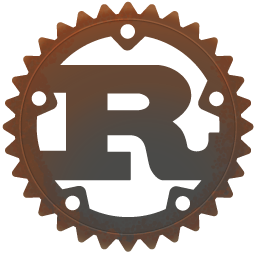lookas
| Crates.io | lookas |
| lib.rs | lookas |
| version | 0.5.1 |
| created_at | 2025-08-17 12:58:17.328528+00 |
| updated_at | 2025-09-07 10:11:55.792954+00 |
| description | A terminal-based audio spectrum visualizer written in Rust |
| homepage | |
| repository | https://github.com/ashgw/lookas |
| max_upload_size | |
| id | 1799394 |
| size | 75,207 |
documentation
README

Lookas
A high-performance, terminal-based audio spectrum visualizer written in Rust that transforms your audio into mesmerizing real-time visual patterns.
What It Does
Lookas captures your system audio, breaks it into frequency bands with a mel-scale FFT, and renders it as smooth, physics-driven bars in the terminal. Adaptive gain and noise gating keep the visuals clean, while zero-copy rendering ensures 60+ FPS with minimal latency. Multiple layouts are supported, and it runs cross-platform on Linux, macOS, and Windows, given you have Rust installed.
Installation
cargo install lookas
Basic Usage
Simply run the visualizer with default settings:
lookas
Controls:
h- Switch to horizontal orientationv- Switch to vertical orientationq- Quit the application
Configuration
You can fine-tune the visualization for your specific audio setup and preferences using these environment variables.
Settings
| Variable | Description | Default | Range |
|---|---|---|---|
LOOKAS_FMIN |
Minimum frequency to display (Hz) | 30.0 | 10.0 - 1000.0 |
LOOKAS_FMAX |
Maximum frequency to display (Hz) | 16000.0 | 1000.0 - 24000.0 |
LOOKAS_FFT_SIZE |
FFT window size (power of 2) | 2048 | 512, 1024, 2048, 4096 |
Performance & Display
| Variable | Description | Default | Range |
|---|---|---|---|
LOOKAS_TARGET_FPS_MS |
Target frame time (milliseconds) | 16 | 8 - 50 |
LOOKAS_MODE |
Display mode | "rows" | "rows", "columns" |
LOOKAS_HUD |
Show header with device info | 0 | 0, 1 |
Audio Processing
| Variable | Description | Default | Range |
|---|---|---|---|
LOOKAS_TAU_SPEC |
Spectrum smoothing time constant | 0.06 | 0.01 - 0.20 |
LOOKAS_GATE_DB |
Noise gate threshold (dB) | -55.0 | -80.0 - -30.0 |
LOOKAS_TILT_ALPHA |
Frequency response tilt factor | 0.30 | 0.0 - 1.0 |
Animation Physics
| Variable | Description | Default | Range |
|---|---|---|---|
LOOKAS_FLOW_K |
Horizontal flow between bars | 0.18 | 0.0 - 1.0 |
LOOKAS_SPR_K |
Spring stiffness for bar movement | 60.0 | 10.0 - 200.0 |
LOOKAS_SPR_ZETA |
Spring damping factor | 1.0 | 0.1 - 2.0 |
Example Configurations
High-Resolution Mode (more frequency detail):
LOOKAS_FFT_SIZE=4096 LOOKAS_FMIN=20 LOOKAS_FMAX=20000 lookas
Performance Mode (smooth on lower-end systems):
LOOKAS_TARGET_FPS_MS=33 LOOKAS_FFT_SIZE=1024 lookas
Bass-Heavy Music:
LOOKAS_FMIN=20 LOOKAS_FMAX=8000 LOOKAS_TILT_ALPHA=0.1 lookas
Classical Music:
LOOKAS_FMIN=40 LOOKAS_FMAX=12000 LOOKAS_TAU_SPEC=0.12 lookas
How It Works
Lookas runs a fast, low-latency audio pipeline built to turn raw sound into smooth, responsive visuals. It starts by hooking directly into your system audio, through a loopback device, so what you see is exactly what you hear, no setup friction, no manual wiring.
The signal is then windowed with Hann smoothing to avoid leakage and pushed through an FFT to break the stream into frequency components. Those raw bins are remapped onto a mel-scale filterbank so the output reflects how we actually perceive sound rather than just a grid of math.
To keep the display clean and balanced, it constantly adjusts its dynamic range. It tracks energy percentiles to scale loudness in real time, cuts off background hiss with noise gating, and applies frequency tilt so no single band overwhelms the others. The result is a visual field that feels natural and reacts instantly to changes in the mix.
On top of that sits a lightweight physics model. Instead of raw bar jumps, Lookas runs each band through a spring-damper system so motion carries weight and flow. Energy diffuses between neighbors, giving the spectrum a fluid, wave-like feel. Every calculation is written to avoid allocations on the hot path, which means it runs smooth even at high refresh.
Finally, the renderer pushes everything to the terminal with dense Unicode block characters, letting gradients show up clean without burning cycles. FFT calls are SIMD-accelerated where hardware allows, memory access is cache-friendly, and processing adapts automatically to the system it runs on.
On modern machines, this translates to a consistent 60+ frames per second with sub-5ms audio latency—snappy enough that the visuals feel like part of the sound itself.


